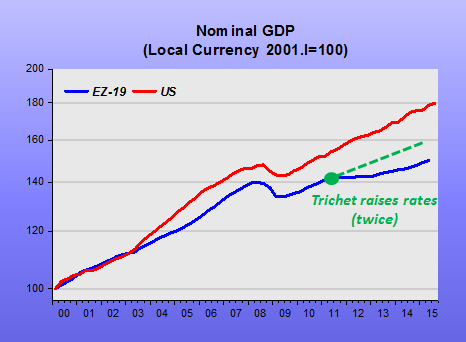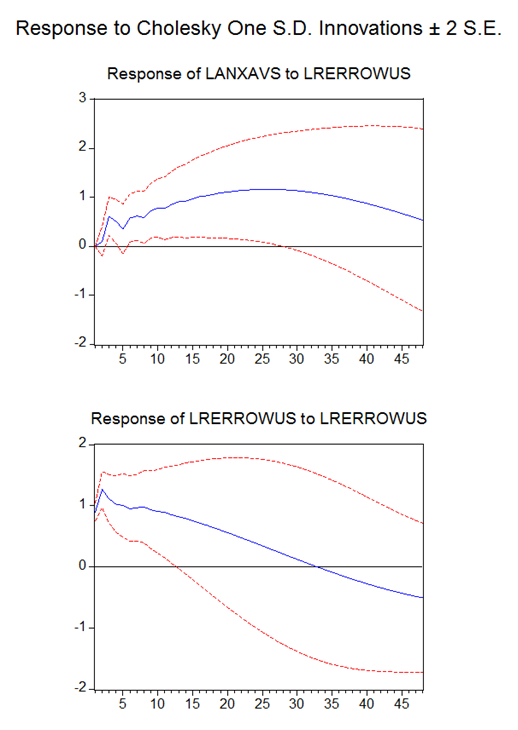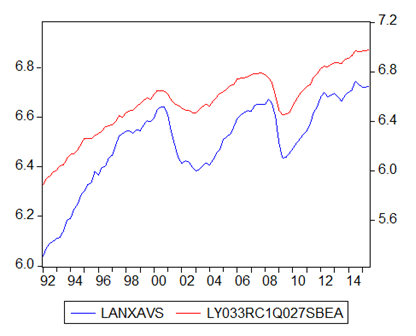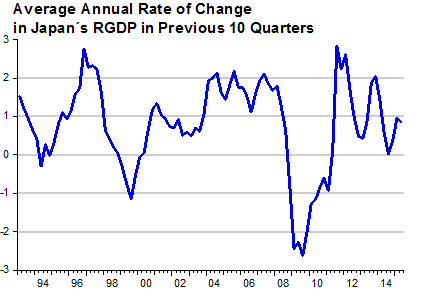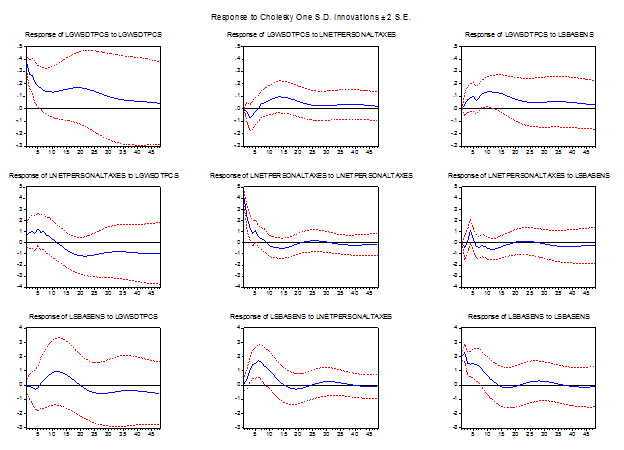A James Alexander post
I agree with Scott Sumner in his strong belief in the Efficient Market Hypothesis. The market is always right. But quite what it is “right” about is not always easy to tell. Sure, on central bank announcements the immediate market reaction is very telling. The market reaction is the policy, and this is not always what the central banks thinks is the policy.
The surprise Brexit vote did lead to some huge movements as markets opened on Friday 24th June and then more on Monday 27th after a weekend of follow-up news and reflection. But what were the markets signalling, especially the GBP devaluation and the large drops in the most domestically-oriented equities?
Scott Sumner wrote:
Brexit will reduce the foreign demand for British goods, services and assets. Since one needs pounds to buy British stuff, this reduces the value of the pound, as well as the quantity of exports. Think of it as a leftward shift in the demand for pounds, on an S&D diagram.
I am willing to admit less demand for pounds due to expected less FDI, as some global firms who based their EU businesses in the UK think of moving that production to inside the newly shrunk EU ex-UK. This is not a domestic demand shock directly as businesses would be choosing to produce less goods and services in the UK that were then exported.
Exports would also be expected to fall, further weakening demand for pounds, already weakened from less expected FDI.
The indirect effect is a demand shock for labour in the UK, that in turn reduces demand for goods and services within the UK.
UK workers are not less productive, there is just less demand for them. It is very hard to claim that the potentially lost UK export industries are more or less productive than average UK industry.
Other things being equal, less FDI, less exports and a potential, indirect, demand shock will shrink the size of the UK real economy. The drops of 10%-30% in some domestic-focused UK shares in particular sectors like commercial and residential real estate (British Land and Barret Developments), retail (Tesco and Marks & Spencer), banks (Lloyds Bank and Close Brothers) and media (Sky and ITV) illustrate this fear well.
However, care needs to be taken when looking at these sectors and judging the stock price falls. Property companies and banks are leveraged plays on the local economy, so that any local economy weakness gets magnified, sometimes greatly. Retail companies have been suffering from weak NGDP for years, as well as from the secular change to internet retailing, and so their equity prices may be particularly vulnerable to small changes in AD.
And care also needs to be taken not to assume the worst. Both the outcome of the negotiations with the EU and the eventual trade agreements with the Rest of the World will alter greatly these worst-case scenarios. In the absence of a government, fear and uncertainty get free reign but will dissipate over time, perhaps more quickly than many expected. if the latest news on Mrs May’s unopposed path to the top job is anything to go by.
Here comes the offset
But as Scott knows well a leftward shift in the demand curve for pounds is not like a shift in the demand curve for apples. A devaluation will lead to major monetary offset in the country experiencing the devaluation – even if these benefits are not immediately apparent – or understood by many commentators. The benefits will still accrue unless the devaluation is artificially prevented. So far the signs from the Bank of England are that it will be encouraged.
The current account may or may not improve following a devaluation as Chris Giles succinctly explained in the FT last week. He was echoing many macro experts. Unfortunately, Giles, like most economists and commentators who understand the subtleties of devaluation on trade deficits missed the bigger picture. The main benefit of a devaluation is something else.
In early 2014 in a discussion about Abenomics Scott re-posted a classic comment from the legendary Mark Sadowski. The punchline is very clear:
Devaluation improves a country’s trade balance only if the Marshall-Lerner condition on trade elasticities holds, and research shows that they’re not met in the majority of cases, either past or present:
That’s not to say that currency devaluation isn’t beneficial, of course it is, but the benefit flows primarily from increased domestic demand.
Chris Giles does understand, and in fact warns in a follow-up piece about higher inflation in the UK as a consequence of the devaluation and how it might hurt households:
In summary, Brexit has unleashed a different sort of currency depreciation, according to modern economics, one that is less likely to encourage domestic investment for exports, is more likely to raise inflation and will be more painful for hard-pressed families.
But it will drive up NGDP up, as domestic demand has to rise in nominal terms, and this, given wage and price stickiness, will drag up GDP in real terms too.
In fact, this rising nominal demand will be especially welcome in a UK economy starved of nominal growth for the last 12 months. Something on which Giles and most of the UK macro-economic commentariat have been notably, not to say shamefully, silent.
Around the same time as the Sadowski re-post but on a different subject, Britmouse over at uneconomical also had an excellent post making a related point:
It is not that a[negative]productivity shock causes a rise in unemployment. A productivity shock causes a tightening of monetary policy which causes a rise in unemployment.
Brexit may cause a supply shock but there will only be a rise in unemployment if monetary policy is also tightened. If monetary policy is eased there will be moves within the economy from one job to another, but not an overall reduction in employment. That is the benefit of stable nominal growth, some people may experience low or no nominal wage growth but they will not be made unemployed.
Will the UK be poorer on leaving the EU? Maybe, but economies are quick to adjust as long as nominal growth is maintained at a suitable level. Unilateral free trade would also help as sagely proposed by the economists for Brexit.




